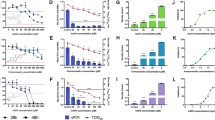Abstract
In this study, several medicinal plant extracts including spices, herb teas, and medical herbs were screened for antiviral activity against feline calicivirus (FCV), a surrogate of norovirus. Among them, a methanolic extract of green tea, Camellia sinensis, only exhibited a significant antiviral activity against FCV. The methanolic extract was further fractionated with several solvents such as methanol (MeOH), n-hexane, chloroform (CHCl3), ethyl acetate (EtOAc), n-butanol (n-BuOH), and water. EtOAc-soluble fraction exhibited the highest antiviral activity against FCV. Moreover, the analysis of the most active fraction using a HPLC led to the identification of 4 known catechins: (-)-epigallocatechin (EGC), (-)-epicatechin (EC), (-)-epigallocatechin gallate (EGCG), and (-)-epicatechin gallate (ECG). Among the catechins tested in this study, EGCG exhibited the most effective antiviral activity (EC50, 12 mg/mL) with relatively low cytotoxicity (CC50, 320 mg/ mL), resulting relatively high selectivity index value 26.67. To our knowledge, this is the first experimental verification showing antiviral activity of catechins from green tea against FCV.
Similar content being viewed by others
References
Leuenberger S, Widdowson MA, Feilchenfeldt J, Egger R, Streuli RA. Norovirus outbreak in a district general hospital-new strain identified. Swiss Med. Wkly. 27: 57–81 (2007)
Cheesbrough JS, Barkess-Jones L, Brown DW. Possible prolonged environmental survival of small round structured viruses. J. Hosp. Infect. 35: 325–326 (1997)
Teunis PF, Moe CL, Liu P, Miller SE, Lindesmith L, Baric RS, Le Pendu J, Calderon RL. Norwalk virus: How infectious is it? J. Med. Virol. 80: 1468–1476 (2008)
Hall AJ, Eisenbart VG, Etingüe AL, Gould LH, Lopman BA, Parashar UD. Epidemiology of foodborne norovirus outbreaks, United States, 2001–2008. Emerg. Infect. Dis. 18: 1566–1573 (2012)
Caul EO. Small round structured viruses: Airborne transmission and hospital control. Lancet 343: 1240–1242 (1994)
Glass RI, Parashar UD, Estes MK. Norovirus gastroenteritis. New Engl. J. Med. 18: 1776–1785 (2009)
Fankhauser RL, Monroe SS, Noel JS, Humphrey CD, Bresee JS, Parashar UD, Ando T, Glass RI. Epidemiologic and molecular trends of “Norwalk-like viruses” associated with outbreaks of gastroenteritis in the United States. J. Infect. Dis. 186: 1–7 (2002)
Monroe SS. Control and prevention of viral gastroenteritis. Emerg. Infect. Dis. 17: 1347–1348 (2011)
Duizer E, Schwab KJ, Neill FH, Atmar RL, Koopmans MP, Estes MK. Laboratory efforts to cultivate noroviruses. J. Gen. Virol. 85: 79–87 (2004)
Bidawid S, Malik N, Adegbunrin O, Sattar SA, Farber JM. A feline kidney cell line-based plaque assay for feline calicivirus, a surrogate for Norwalk virus. J. Virol. Methods 107: 163–167 (2003)
Schäfer H, Wink M. Medicinally important secondary metabolites in recombinant microorganisms or plants: Progress in alkaloid biosynthesis. Biotechnol. J. 4: 1684–1703 (2009)
Marinangeli CP, Jones PJ. Functional food ingredients as adjunctive therapies to pharmacotherapy for treating disorders of metabolic syndrome. Ann. Med. 42: 317–333 (2010)
Gertsch J. Botanical drugs, synergy, and network pharmacology: Forth and back to intelligent mixtures. Planta Med. 77: 1086–1098 (2011)
Braicu C, Pilecki V, Balacescu O, Irimie A, Neagoe IB. The relationships between biological activities and structure of flavan-3-ols. Int. J. Mol. Sci. 12: 9342–9353 (2011)
Kampf G, Grotheer D, Steinmann J. Efficacy of three ethanol-based hand rubs against feline calicivirus, a surrogate virus for norovirus. J. Hosp. Infect. 60: 144–149 (2005)
Kim KL, Lee DS, Park MS, Eom SH, Lim KS, Kim JS, Lee DH, Kang CK, Kim YM, Lee MS. Antiviral activity of seaweed extracts against feline calicivirus. Fish. Aqua. Sci. 13: 96–101 (2010)
Bellamy K. A review of the test methods used to establish virucidal activity. J. Hosp. Infect. 30: S389–S396 (1995)
Umegaki K, Sugisawa A, Yamada K, Higuchi M. Analytical method of measuring tea catechins in human plasma by solid-phase extraction and HPLC with electrochemical detection. J. Nutr. Sci. Vitaminol. 47: 402–408 (2010)
Chow HH, Cai Y, Alberts DS, Hakim I, Dorr R, Shahi F, Crowell JA, Yang CS, Hara Y. Phase I pharmacokinetic study of tea polyphenols following single-dose administration of epigallocatechin gallate and polyphenon E. Cancer Epidem. Biomar. 10: 53–58 (2001)
Zhang YM, Rock CO. Evaluation of epigallocatechin gallate and related plant polyphenols as inhibitors of the FabG and FabI reductases of bacterial type II fatty-acid synthase. J. Biol. Chem. 279: 30994–31001 (2004)
Rusak G, Komes D, Likic S, Horzic D, Kovac M. Phenolic content and antioxidative capacity of green and white tea extracts depending on extraction conditions and the solvent used. Food Chem. 110: 852–858 (2008)
Nance CL, Siwak EB, Shearer WT. Preclinical development of the green tea catechin, epigallocatechin gallate, as an HIV-1 therapy. J. Allergy Clin. Immun. 123: 459–465 (2009)
Kanwar J, Taskeen M, Mohammad I, Huo C, Chan TH, Dou QP. Recent advances on tea polyphenols. Front. Biosci. 4: 111–131 (2012)
Yin Z, Henry EC, Gasiewicz TA. (-)-Epigallocatechin-3-gallate is a novel Hsp90 inhibitor. Biochemistry 48: 336–345 (2009)
Author information
Authors and Affiliations
Corresponding author
Rights and permissions
About this article
Cite this article
Oh, EG., Kim, KL., Shin, S.B. et al. Antiviral activity of green tea catechins against feline calicivirus as a surrogate for norovirus. Food Sci Biotechnol 22, 593–598 (2013). https://doi.org/10.1007/s10068-013-0119-4
Received:
Revised:
Accepted:
Published:
Issue Date:
DOI: https://doi.org/10.1007/s10068-013-0119-4




